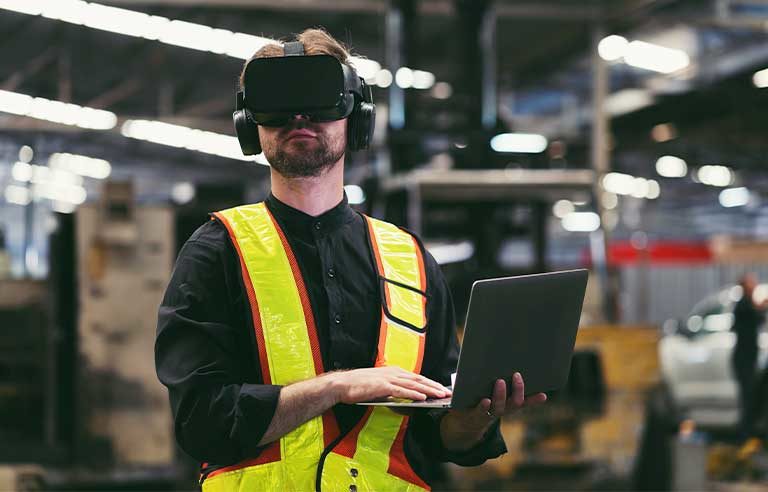Technology solutions
How can technology help enhance my organization’s safety culture?

Responding is Scott Gaddis, vice president, global practice leader – safety and health, Intelex Technologies, Owensboro, KY.
Digital technology, automation and artificial intelligence are proving to be critical components of making organizations stronger and more resilient.
Integrated systems that provide common standards for data quality help ensure accurate measurement and reporting of everything from environmental, health and safety incidents to emissions for environmental, social and governance reporting. Without an integrated system, data can sit isolated and redundant, meaning organizations need to revert to spreadsheets and manual methods of managing data.
Although technology can help transform workplace safety, it’s vital to acknowledge that predictive tools alone can’t prevent injuries. Safety excellence requires human input and a collective commitment from every organizational level.
The human factor
Many organizations encounter frustration when their safety programs plateau or fail to yield desired results despite implementing new tools and processes. The root cause often lies in disengaged frontline workers or leaders. A genuine commitment to safety involves not only the adoption of advanced technologies but also nurturing a culture in which every employee feels empowered to play their part in contributing to safety initiatives and upholding best practice standards.
A range of engagement models are designed to address the human element in safety excellence. Some of these models include safety culture assessments, leadership engagement workshops and leading indicator program development.
Better employee engagement is fundamental to uncovering incidents and near misses faster and more effectively. Yet, the question many employers ask themselves is, “How can we get frontline employees engaged in the process?” This can differ from organization to organization. However, a sound place to start is being able to demonstrate a positive impact from the health and safety initiatives implemented.
Technology solutions
Employers must have their data to be able to track and measure their health and safety performance effectively, and to demonstrate to their workers that the health and safety practices they’ve put in place are making a difference. Using the right technology enables organizations to access and report on this information:
Real-time monitoring and analytics: Deploying wearable devices, Internet of Things sensors and smart cameras gathers data on employee behavior, environmental conditions and equipment performance. Analyzing this data identifies patterns, predicts hazards and allows timely interventions.
Virtual and augmented reality training: Immersive simulations enable employees to respond to potential hazards in a controlled environment, enhancing preparedness for real-world situations.
Predictive maintenance: Predictive maintenance – using sensors and machine learning – significantly enhances equipment safety. Real-time monitoring allows employers to predict potential failures and schedule proactive maintenance, reducing incidents caused by faulty machinery.
Mobile apps: A transparent and easy-to-use reporting system encourages a proactive safety mindset, fostering a culture where everyone contributes to a safer work environment.
Cloud-based safety management systems: Cloud-based safety management systems streamline compliance, reporting and communication, ensuring consistency in safety protocols and facilitating continuous improvement through data-driven insights.
AI: AI algorithms analyze vast datasets, identifying hidden patterns and potential risks. Integrating AI into safety protocols enhances the ability to predict, prevent and respond to safety threats effectively.
As organizations navigate the complexities of a rapidly evolving world, investing in technology to enhance safety culture isn’t just a choice but a strategic imperative. By embracing real-time monitoring, immersive training, predictive maintenance and other technological advancements, employers can create a safer, more resilient workplace. However, it’s crucial to remember that technology alone isn’t a solution. Safety excellence requires the commitment of people across the organization who actively engage with these technologies, implement preventive measures and contribute to a culture where safety is everyone’s responsibility.
Editor's note: This article represents the independent views of the author and should not be considered a National Safety Council endorsement.
Post a comment to this article
Safety+Health welcomes comments that promote respectful dialogue. Please stay on topic. Comments that contain personal attacks, profanity or abusive language – or those aggressively promoting products or services – will be removed. We reserve the right to determine which comments violate our comment policy. (Anonymous comments are welcome; merely skip the “name” field in the comment box. An email address is required but will not be included with your comment.)

